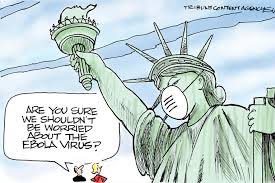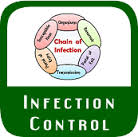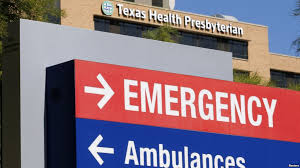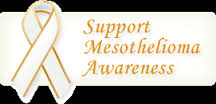Category Archives: Contagious and infectious diseases
EBOLA — WHAT YOU NEED TO KNOW
By Bob Aronson
 Over the years this blog has offered a lot of information on how to take care of your organs. We believe strongly that the way to solve the shortage of transplantable organs is to 1) encourage donation and 2) do everything possible to reduce the demand. That means we must continually be on guard to prevent threats to our health and we depend on public health officials and the news media to provide us with that information. Ebola is the latest threat and it’s a dandy. It can destroy all of your organs — all of them.
Over the years this blog has offered a lot of information on how to take care of your organs. We believe strongly that the way to solve the shortage of transplantable organs is to 1) encourage donation and 2) do everything possible to reduce the demand. That means we must continually be on guard to prevent threats to our health and we depend on public health officials and the news media to provide us with that information. Ebola is the latest threat and it’s a dandy. It can destroy all of your organs — all of them.
After watching the Ebola story develop in the past few weeks I came to the conclusion that we are getting mixed messages from a number of sources and the mass media doesn’t do a very good job of filtering them, they just hop, skip and jump from one new development to another with little effort given to finding and tying loose ends.
To date most of the regular TV news stories on the Dallas, Texas Ebola incident lack detail and as a result serve no purpose but to inflame, confuse and cause panic. Print stories have been better but it has been hard to find many really comprehensive reports. That’s probably because Ebola is a moving target. Just as I was about to publish this blog, there were two new developments.
The first new development is that one of the health care workers at the Dallas hospital where the first Ebola patient died, has tested positive for the Ebola Virus. This is a breaking news story so it won’t be covered in detail here. The second development today is from President Obama’s National Security advisor Susan Rice who is expressing some dismay at the sorry state of the world response to the Ebola Threat. She is not so subtly sounding the alarm and calling for “All hands on Deck.”
With the exception of some investigative or in-depth network reports, TV news channels have been saying pretty much the same thing. As the story goes, a man who had recently traveled from Liberia in West Africa to Dallas, Texas checked into an emergency room at Presbyterian hospital there with a temperature of 103 degrees. He was treated for a stomach virus and sent home. That’s pretty much what most people know about the Dallas situation and the Ebola virus. The story, though, is grossly incomplete. That is not to say the hospital in question should be exonerated of any responsibility, they should not, but nothing is ever as simple as it sounds.
It is important first, to understand what we are dealing with. Ebola hemorrhagic fever (EHF), caused by the Ebola virus, is a severe viral hemorrhagic disease characterized by initial fever and malaise followed by gastrointestinal symptoms, bleeding, shock, and multi-organ system failure. Over 25 different viruses cause viral hemorrhagic fever. Ebola virus is a member of the virus family Filoviridae, along with Marburg virus.
EHF is difficult to distinguish from a host of other febrile illnesses, at least early in the course of disease. Other viral hemorrhagic fevers need to be excluded, especially Marburg hemorrhagic fever, as well as malaria and typhoid fever.
Patients should be isolated and viral hemorrhagic fever precautions (face shields, surgical masks, double gloves, surgical gowns, and aprons) should be used to prevent transmission. As there is presently no antiviral drug available for EHF, treatment is supportive, following the guidelines for treatment of severe septicemia. Persons who had unprotected contact with someone with EHF should be monitored. Case fatality rates vary consistently with the specific infecting virus, ranging from zero to over 80%.
I spent 25 years of my life as a communication consultant and specialized in working with health care organizations like  clinics, hospitals, research centers, pharmaceutical companies, research labs and more. I know how important infection/contagion control is in these facilities and how much time, effort and money is spent on programs to ensure patient safety. That’s why what happened in Dallas with the Ebola patient stands out. Numerous studies make it very clear that in the great majority of cases in which patient safety is at risk communication is the culprit.
clinics, hospitals, research centers, pharmaceutical companies, research labs and more. I know how important infection/contagion control is in these facilities and how much time, effort and money is spent on programs to ensure patient safety. That’s why what happened in Dallas with the Ebola patient stands out. Numerous studies make it very clear that in the great majority of cases in which patient safety is at risk communication is the culprit.
While Ebola may sometimes be difficult to diagnose, every hospital and clinic in this country has check lists on contagious diseases and infections. They do regular drills, have training sessions and should be well prepared for any eventuality. What happened in Dallas shouldn’t have happened, but it did. Now what?
 Dr. Anthony Fauci from the National Institutes of Health (NIH) an acknowledged expert on infectious diseases says that while he understands our fears we also need to understand that what is happening in West Africa is because of the weaknesses in their health system. “West Africa,” he says, “Is not the United States, we won’t have an outbreak. Scientists know how to stop the virus from spreading.”
Dr. Anthony Fauci from the National Institutes of Health (NIH) an acknowledged expert on infectious diseases says that while he understands our fears we also need to understand that what is happening in West Africa is because of the weaknesses in their health system. “West Africa,” he says, “Is not the United States, we won’t have an outbreak. Scientists know how to stop the virus from spreading.”
While I hope he is right, I wish Dr. Fauci had not said that. Knowing how to do something and actually accomplishing it may be worlds apart. This isn’t just about the medical profession knowing what to do, it is about all of us knowing what to do and when — and then communicating properly and following the plan. Nothing, Dr. Fauci, is as easy as it seems. and your overly simplistic assurances could be harmful, lulling us into a false sense of security. I’ll explain more shortly.
An ABC News report tells a story that differs from Dr. Fauci’s view. The Network account quoted Dr. Ryan Stanton, an emergency room physician in Lexington, Kentucky, and spokesman for the American College of Emergency Physicians as saying, “We’re all a little bit on edge because we’ve never seen it before. Stuff we’ve seen before, like heart attack and stroke, we recognize as soon as we walk in the door. For Ebola, it’s not going to come as naturally. It’s not even a needle in a haystack,” he went on. “It’s a needle in a hayfield we’re trying to find.” That statement kind of casts some doubt on Dr. Fauci’s position. Add the Susan Rice comments to the mix and Dr. Fauci is sounding far too positive. If after reading this far you think, “There’s more to the Ebola outbreak than meets the eye,” you’d be right. There is.
The question on everyone’s mind is, “How could the ER people in Dallas have missed this case? Well, they did not miss it, it kind of missed them.  We have it on good authority that the Dallas ER nurse properly accounted for the feverish patient’s recent travel in Africa, but that information did not get communicated to the rest of the team. Instead, the patient was treated with antibiotics for a presumed run-of-the-mill stomach virus. So it appears that while the checklist was completed poor team communication prevented its proper execution.
We have it on good authority that the Dallas ER nurse properly accounted for the feverish patient’s recent travel in Africa, but that information did not get communicated to the rest of the team. Instead, the patient was treated with antibiotics for a presumed run-of-the-mill stomach virus. So it appears that while the checklist was completed poor team communication prevented its proper execution.
It is entirely possible that the Nurse’ proper reaction was ignored for any number of reasons. 1) It came from a nurse, not a doctor (yes, there is institutional, professional arrogance) 2. The team was busy, tired and careless and chose to ignore the Nurse’ efforts and 3) the Nurse did not communicate with the right people and the communication was unclear, unreadable or could not be heard. I suspect that there might be a dozen more reasons or excuses as well.
I am not qualified to argue medical facts with Dr. Fauci — I don’t even want to and the reason is simple, he is right. What he said is absolutely correct. The medical profession does know how to stop Ebola. What they don’t do very well, is communicate what they know to those of us who don’t.
After 25 years of working as a communications coach and consultant to the medical profession I can tell you that communication is not one of their strong suits. I have great respect for physicians and loved working with them but their ability to speak in understandable and memorable terms is not a well developed skill. Think about your interactions with your doctors and how many times you leave his or her office saying, “I don’t think my questions got answered,” or, “What did he mean when he said,….”
But, let’s go back to the Dallas case. I do not doubt that the Dallas medical team knew how to deal with Ebola. The question that is at the core of the issue, though is, “How effective was the communication they used to put the systems in place to accomplish that end? It is not their medical expertise I doubt, it is their ability to communicate what they know and suspect in an effective and understandable manner. And — if the patient safety record in American health care institutions is any indication of that prowess then we are in a heap of trouble. This is where the Fauci assurances fall flat. A 2013 story in Forbes Magazine said: http://www.forbes.com/sites/leahbinder/2013/09/23/stunning-news-on-preventable-deaths-in-hospitals/
 “In 1999, Americans learned that 98,000 people were dying every year from preventable errors in hospitals. That came from a widely touted analysis by the Institute of Medicine (IOM) called To Err Is Human. This was the “Silent Spring” of the health care world, grabbing headlines for revealing a serious and deadly problem that required policy and action.
“In 1999, Americans learned that 98,000 people were dying every year from preventable errors in hospitals. That came from a widely touted analysis by the Institute of Medicine (IOM) called To Err Is Human. This was the “Silent Spring” of the health care world, grabbing headlines for revealing a serious and deadly problem that required policy and action.
As it turns out, those were the good old days.
According to a new study just out from the prestigious Journal of Patient Safety, four times as many people die from preventable medical errors than we thought. That could be as many as 440,000 deaths a year.
With these latest revelations, medical errors now claim the spot as the third leading cause of death in the United States, dwarfing auto accidents, diabetes and everything else besides Cancer and heart disease.
These people are not dying from the illnesses that caused them to seek hospital care in the first place. They are dying from mishaps that hospitals could have prevented. What do these errors look like? The sponge left inside the surgical patient, prompting weeks of mysterious, agonizing abdominal pain before the infection overcomes bodily functions. The medication injected into a baby’s IV at a dose calculated for a 200 pound man. The excruciating infection from contaminated equipment used at the bedside. Sadly, over a thousand people a day are dying from these kinds of mistakes.
If you aren’t alarmed enough that our country is burying a population the size of Oakland every year, try this: you are paying for it. Hospitals shift the extra cost of errors onto the patient, the taxpayer and/or the business that buys health benefits for the infected patient. My nonprofit, which provides a calculator of the hidden surcharge Americans pay for hospital errors, finds most companies are paying millions or even billions of extra dollars for the cost of harming their employees.
No Cure, No Vaccine Because There’s No Money In It
A recurring question in the case of Ebola or diseases like it is, “Why don’t we have a vaccine or a cure?” Part of the answer to that  question is that diseases like Ebola and Marburg fall into the “Orphan disease” category. These are very rare diseases. The rarity of the diseases provides little incentive for private industry to invest in research and development because the cost per prescription or treatment per patient would be so high few could afford them. There is some government assistance for research but nowhere near enough.
question is that diseases like Ebola and Marburg fall into the “Orphan disease” category. These are very rare diseases. The rarity of the diseases provides little incentive for private industry to invest in research and development because the cost per prescription or treatment per patient would be so high few could afford them. There is some government assistance for research but nowhere near enough.
The Orphan Drug Act of 1983 http://tinyurl.com/3vkffup provides incentives for drug companies to develop treatments for rare diseases. Since the Act was signed into federal law, the U.S. Food and Drug Administration (FDA) has approved more than 200 treatments for rare diseases.
While that number sounds good it is small when put in perspective because there are about 7,000 orphan diseases and some are quite familiar like:
- Cystic fibrosis, which affects the respiratory and digestive systems.
- Huntington disease which affects the brain and nervous system.
- Single genes are also responsible for some rare, inherited types of Examples of these are the BRCA1 and BRCA2 genes, in which certain mutations increase the risk for hereditary breast and ovarian cancers, and the FAP gene, in which mutations increase the risk for hereditary colon cancer.
You can find more information here http://rarediseases.info.nih.gov/about-ordr/pages/31/frequently-asked-questions
As noted the Orphan Drug Act is why there is any activity around Orphan diseases, but it is nowhere near enough because there are so many of them.
Thanks to marketing campaigns aimed at people exposed to asbestos we are all likely familiar with the disease called mesothelioma — perhaps the best-known orphan disease in the nation.
About 3,000 patients are diagnosed with mesothelioma each year, placing it well within the U.S. definition of a rare or orphan disease as one that affects no more than 200,000 patients at a given time. To further complicate matters there are several different forms of the disease so what might work to control one, likely wouldn’t for another. Patients with mesothelioma live for 1 to 2 years past their diagnosis.
 “One of the difficult aspects of mesothelioma is that it often not diagnosed until it is in the later stages, and it is a very aggressive cancer,” says Joe Belluck, a New York mesothelioma lawyer.
“One of the difficult aspects of mesothelioma is that it often not diagnosed until it is in the later stages, and it is a very aggressive cancer,” says Joe Belluck, a New York mesothelioma lawyer.
The disease is difficult to detect since symptoms come after asbestos fibers have invaded organ linings and often mimic that of a bad cold or virus. It also surfaces decades after exposure to asbestos, so it has historically affected an older population with age-related health
It is a very deadly form of cancer and one that falls into the “Orphan” category. Mesothelioma is listed as an orphan disease on registries like rarediseases.org maintained by the National Organization for Rare Diseases (NORD).
Because it affects fewer than 200,000 people at a given time (due to its high mortality rate), treatments specifically for mesothelioma are eligible for orphan drug funding from the Food and Drug Administration (FDA). Under the Orphan Drug Act, companies involved in developing and testing drugs, biologics, and other treatments specifically to treat rare diseases can get tax credits and other incentives to continue development them including:
- 7 years of exclusive marketing for the drug
- Tax credits to cover half the cost of clinical investigations
- Waiving user fees
As you can see, there is far more to the Ebola story than meets the eye. It is a complex issue because Ebola is an Orphan disease that attacks in a multitude of ways and is not always easy to identify. So what can you do? Be informed. Don’t wait for information, seek it out, you might save your life and the lives of people you love. Below are some essential facts, but click on the links, too.
Here are some fast facts on Ebola from CNN: http://tinyurl.com/npqfzt2
CNN Eb0la Fact Sheet
Ebola hemorrhagic fever is a disease caused by one of five different Ebola viruses. Four of the strains can cause severe illness in humans and animals. The fifth, Reston virus, has caused illness in some animals, but not in humans.
humans and animals. The fifth, Reston virus, has caused illness in some animals, but not in humans.
The first human outbreaks occurred in 1976, one in northern Zaire (now Democratic Republic of the Congo) in Central Africa: and the other, in southern Sudan (now South Sudan). The virus is named after the Ebola River, where the virus was first recognized in 1976,according to the Centers for Disease Control and Prevention.
Ebola is extremely infectious but not extremely contagious. It is infectious, because an infinitesimally small amount can cause illness. Laboratory experiments on nonhuman primates suggest that even a single virus may be enough to trigger a fatal infection.
Instead, Ebola could be considered moderately contagious, because the virus is not transmitted through the air, well at least not much. A sneeze could spread it if the droplets from an infected person come in contact with someone who is not, but that’s a very short distance. In the most contagious diseases, such as measles or influenza, virus particles are airborne for longer distances and much more time.
Humans can be infected by other humans if they come in contact with body fluids from an infected person or contaminated objects from infected persons. Humans can also be exposed to the virus, for example, by butchering infected animals.
While the exact reservoir of Ebola viruses is still unknown, researchers believe the most likely natural hosts are fruit bats.
Symptoms of Ebola typically include: weakness, fever, aches, diarrhea, vomiting and stomach pain. Additional experiences include rash, red eyes, chest pain, throat soreness, difficulty breathing or swallowing and bleeding (including internal).
Typically, symptoms appear 8-10 days after exposure to the virus, but the incubation period can span two to 21 days.
Unprotected health care workers are susceptible to infection because of their close contact with patients during treatment.
Ebola is not transmissible if someone is asymptomatic or once someone has recovered from it. However, the virus has been found in semen for up to three months.
Deadly human Ebola outbreaks have been confirmed in the following countries: Democratic Republic of the Congo (DRC), Gabon, South Sudan, Ivory Coast, Uganda, Republic of the Congo (ROC), Guinea and Liberia.
According to the World Health Organization, “there is no specific treatment or vaccine,” and the fatality rate can be up to 90%. Patients are given supportive care, which includes providing fluids and electrolytes and food.
-0-
I hope this report helped to clarify the Ebola issue. If you have comments make them in the space provided or contact me directly at bob@baronson.org.
Bob Aronson of Bob’s Newheart is a 2007 heart transplant recipient, the founder of Facebook’s over 4,000 member Organ Transplant Initiative (OTI) and the author of most of these donation/transplantation blogs. You may comment in the space provided or email your thoughts to me at bob@baronson.org. And – please spread the word about the immediate need for more organ donors. There is nothing you can do that is of greater importance. If you convince one person to be an organ and tissue donor you may save or positively affect over 60 lives. Some of those lives may be people you know and love.
You must be logged in to post a comment.